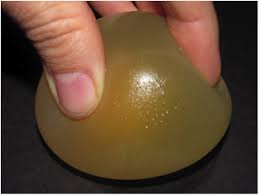The Bouncing Egg Experiment – Fun Kid’s Science
Have you ever seen an egg without a shell? What happens to a normal egg when you drop it? It smashes, right? So in this experiment we are actually going to make a bouncing egg. It will actually bounce like a rubber ball. This simple experiment is outlined in the video below and is an easy experiment for kids of all ages.
Bouncing Egg Experiment Directions:
Step 1: Place the egg in some plain white vinegar for 24-48 hours to dissolve the shell. The length of time may differ due to the different egg shell thicknesses. After a couple of days you should be left with a shell-less egg. Interesting and cool looking!
Step 2: Wash the egg to get the last bits of shell off but be very careful not to break it.
Step 3: Now its time to have fun with your bouncing egg. First put down some newspaper on your table just in case it breaks and splatters. Drop it carefully from a low height on to the surface of your table – it should bounce like a rubber ball!
Step 4: Now try dropping it from different heights and on to different surfaces and record your results. You can even make a scientific table to record your results.
What’s the Science?
Egg shell is made of calcium carbonate. The vinegar is a type of acid called acetic acid. When calcium carbonate is exposed to an acid it causes a reaction. Watch the reaction with the bubble on the shell. The calcium carbonate egg shell dissolves. The rubbery membrane inside the shell around the egg will not dissolve in the vinegar. This rubbery membrane helps you egg bounce and keeps the egg inside.
Other stuff to do with your shell less rubbery bouncing egg:
If you want to see your egg get really big, simply put it in a cup filled with water. The makeup of the inside of the egg is around 90% water. If you put the egg in a cup of (100%) water, the water will begin to move inside the egg through the membrane to equalize the amount of water inside and outside of the egg membrane. This process of water moving through a membrane is called osmosis. Now this is really cool — it will get really big!
Now ask some questions– was this what you expected? Come up with your own theories. Have fun discussing all the possibilities. For more fun experiments and kid’s cooking recipes visit the kid’s section of our Gemperle Family Farms website or visit our Facebook page.


